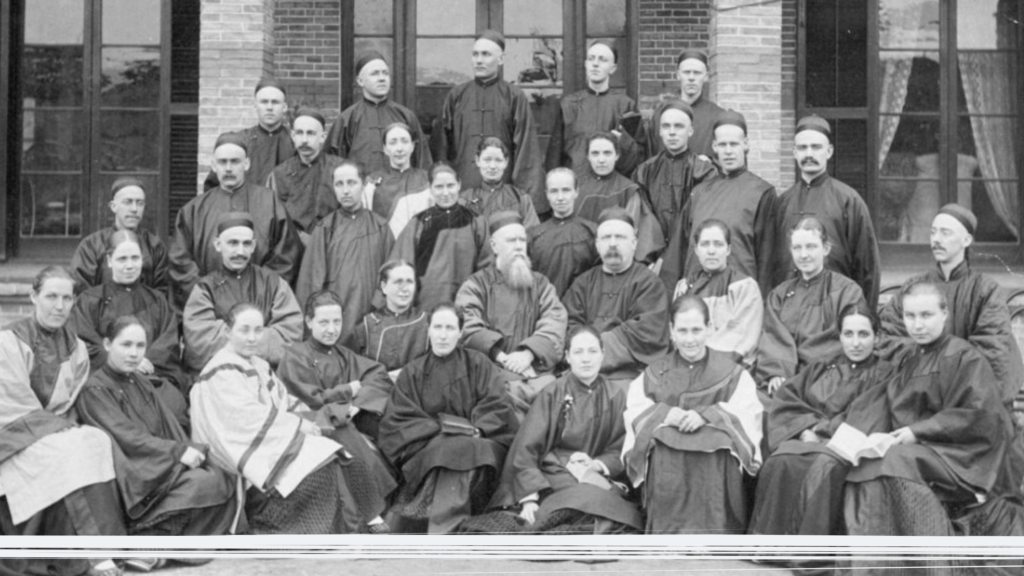What makes a missionary influential? For Hudson Taylor, it wasn’t just his preaching, although he did that. It wasn’t his organizational skills, although he had those. It wasn’t his vision-casting ability that changed missions forever. He was definitely anointed by the Holy Spirit. But one way Hudson Taylor’s anointing showed up was in his ability to connect with the people he wanted to reach.
In 1854, Hudson Taylor arrived in China and was struck by the profound cultural gap between the Western missionaries and the Chinese people. He noticed that the missionaries’ Western attire, living conditions, and worship styles created barriers to effective evangelism. Driven by a desire to make the Gospel accessible to the Chinese, Taylor made a bold decision: he would adopt Chinese customs.
Taylor began wearing traditional Chinese clothing, grew a pigtail as Chinese men did, and immersed himself in learning the local language and customs. Many of his contemporaries met This radical shift with skepticism and outright rejection. Fellow missionaries criticized him, accusing him of compromising his Western identity and, by extension, the purity of the Gospel message. They could not understand why he would abandon the familiar Western ways.
Taylor was undeterred. He believed that to reach the Chinese, he needed to meet them where they were, in their cultural context. This commitment led to founding the China Inland Mission (CIM) in 1865, an organization dedicated to sending missionaries who would live among the people, embracing their culture fully. CIM did not impose Western customs but encouraged missionaries to integrate into Chinese society.
Taylor’s methods proved to be incredibly effective. By dressing like the Chinese and speaking their language fluently, he gained their trust and respect. His approach opened doors that had previously been closed, allowing the Gospel to spread rapidly throughout China. Churches were planted, and thousands came to faith.
In short, he learned to “contextualize.”
What is contextualization?
Contextualization of the Gospel is a practice that involves presenting the Gospel in deeply relevant ways to the cultural contexts of the communities we serve. This practice ensures that the message of Christ is communicated clearly and effectively, resonating with the unique cultural backgrounds and experiences of different people groups. Contextualization is not about altering the Gospel but adapting its presentation to make it more understandable and relatable.
Understanding Contextualization
Contextualization stems from the biblical principle of becoming “all things to all people” to save some, as articulated by the Apostle Paul in 1 Corinthians 9:22-23: “To the weak I became weak, that I might win the weak. I have become all things to all people, and by all means, I might save some. I do it all for the sake of the gospel that I may share with them in its blessings.” Paul’s approach emphasizes the importance of empathy and cultural sensitivity in ministry.
The Great Commission (Matthew 28:19-20) commands us to “go and make disciples of all nations.” This directive implies understanding and appreciation for the diverse cultural landscapes we encounter. By embracing contextualization, we fulfill the Great Commission more effectively, ensuring that the Gospel message is not lost in translation but speaks directly to the hearts of those we are trying to reach.
Why Contextualization is Important
- Cultural Relevance: Contextualization helps the Gospel resonate within different cultural frameworks. When the message is presented in a way that aligns with local customs and traditions, it is more likely to be received and understood. For instance, Jesus often used parables that were relatable to His time’s agricultural society (Matthew 13).
- Effective Communication: Language, symbols, and practices vary across cultures. By adapting our communication methods, we can convey the Gospel more clearly. Acts 17:22-34 provides a powerful example of this when Paul speaks at the Areopagus. He references the local culture and even their altar, “To an unknown god,” to introduce them to the true God.
- Building Trust and Respect: Contextualization demonstrates respect for the cultural identity of the people we minister to. This respect builds trust and opens doors for deeper relationships. In John 4, Jesus engages with the Samaritan woman at the well, acknowledging and respecting her cultural background while leading her to the truth.
Biblical Support for Contextualization
The Bible provides numerous examples of contextualization. Jesus Himself incarnated into a specific cultural and historical context, fully embracing the Jewish customs of His time (John 1:14). Similarly, the early church’s decision at the Jerusalem Council (Acts 15) to not impose Jewish customs on Gentile believers is a significant example of cultural sensitivity and contextualization.
Examples of Contextualization in Local Cultures
- Trunk or Treat: Redeeming Cultural Events for the Gospel
One innovative example of contextualization is the “Trunk or Treat” event. Originating in the United States, trunk-or-treat events are community gatherings where children dress up in costumes and collect candy from the trunks of cars. Recognizing the cultural significance of Halloween, several churches have embraced this tradition by organizing their own Trunk or Treat events. These events provide a safe and family-friendly environment, incorporating Gospel-centered activities like Trunk or Treat Bible story stations and prayer booths. This creative approach captures the cultural consciousness of Halloween and redirects it towards Christ. Click here for an example of trunk-or-treat Church ideas.
- Storytelling in African Communities
In many African cultures, storytelling is a crucial method for conveying history and values. Missionaries and local church leaders have utilized storytelling to share the Gospel, presenting biblical narratives in a familiar and engaging format. This method, known as “Bible storying,” allows individuals to hear and discuss the stories in their native languages, making the Gospel accessible and empowering local believers to spread the message further.
- Adapting Worship Styles in Latin America
Worship in Latin America often includes music and dance, integral to cultural celebrations. Churches have embraced these elements, incorporating traditional instruments and rhythms into their worship services. This contextualization honors the cultural heritage of congregants while directing their worship towards God, demonstrating that following Christ can be an expression of cultural identity.
Conclusion
Contextualization in missions and outreach is about making the Gospel message relevant and accessible to different cultures without compromising its core truths. By understanding and respecting cultural contexts, we communicate the love of Christ more effectively and build bridges that lead to lasting transformation. Through community events like Trunk or Treat, storytelling in African communities, or culturally relevant worship in Latin America, contextualization helps fulfill the Great Commission by embracing the rich diversity of God’s creation.
About the Author:
Darrell Stetler II has been a pastor of a church in South Oklahoma City since 2003. He designs tools for discipleship ministry in the local church. He’s the author of a 40-day Bible study on holiness. The discipleship resources produced by NewStart make it possible to multiply disciples that make disciples. For an example of a free discipleship tool, check out his free Bible reading plan for new believers. He also created the Gospel Trunk or Treat by collecting years of Trunk or Treat ideas for churches. You can follow him on X(Twitter), or on Facebook.





